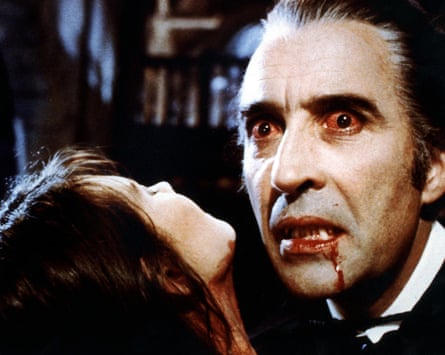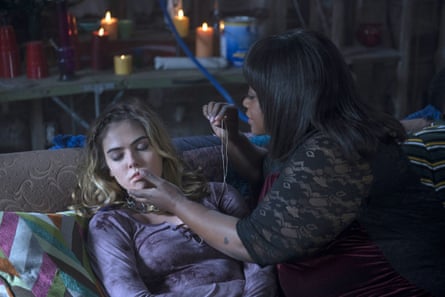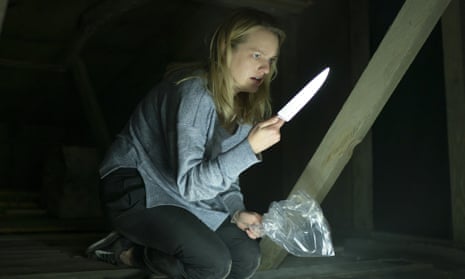After the unexpected success of The Invisible Man, a low-budget adaptation of the HG Wells novel that tapped into contemporary fears around stalking and toxic masculinity, the film industry’s appetite for the hoary old staples of classic horror appears to have reawakened, like a shambling zombie emerging from a freshly-dug grave. Blumhouse, the independent studio behind The Invisible Man as well as hits such as Get Out, The Hunt and Happy Death Day, has just announced its latest project: a new version of that genre favourite, Dracula. With a string of successes behind it, and a newfound predilection for the classic stories that have transfixed generations of horror fans, Blumhouse now resembles nothing less than a modern-day version of Hammer, the British production company whose name became a byword for terror in the 1950s and 60s.
Hammer is arguably most renowned for immortalising Dracula featuring Christopher Lee as the suave, aristocratic bloodsucker in a string of baroque, highly coloured films; their stable of stars also included Peter Cushing who played (among others) Van Helsing to Lee’s Dracula, Victor Frankenstein and Sherlock Holmes. Much revered for its gory, gaudy approach, Hammer profited by an agreement with Universal studios, whose “horror cycle” of the 1930s introduced these stories to mass cinema audiences, featuring the likes of Bela Lugosi and Boris Karloff.

It looks as though Blumhouse has pulled off a similar trick, as its recent Invisible Man, backed by Universal, is largely credited with reinvigorating the studio’s beleaguered “Dark Universe”, conceived as the horror-movie answer to multi-part film series such as Marvel or Star Wars, but which stumbled with the failure of its first high-profile offering, The Mummy, starring Tom Cruise and Russell Crowe, in 2017. The Mummy cost around $125m to make, and only managed to muster $80m in its home market (though was somewhat rescued by overseas box office, resulting in $409m in total worldwide takings). In contrast, this year’s Invisible Man cost $7m, and has so far made its cost back many times over, at $105m globally.
For Alan Jones, horror film expert and co-director of horror festival FrightFest, the comparison between Blumhouse and Hammer is a valid one, but there are certain key differences. “[Blumhouse CEO] Jason Blum is very clever: he surrounds himself with superfans and genre fans. Hammer never did that: I’ve met quite a few of the original people, and to be honest they had no real love for the genre; it was just a business. Obviously it’s a business for Blum too, but there is a bit more fandom in the background at Blumhouse and they are trying to do right by the properties. That’s the main difference.”

One of The Invisible Man’s strengths was to thoroughly contemporise the fable, focusing on Elisabeth Moss as a woman who fears the invisible entity is her controlling ex, harassing and stalking her. Alan Jones, horror film expert and co-director of horror festival FrightFest, says he thought Invisible Man was “absolutely fantastic” and that the film “updated the story in exactly the right way: touching every hot button issue of the moment but still keeping true to what the actual core concept is. I hope they do that with Dracula too.” Details of the new film are thin on the ground, but Blumhouse has announced that director Karyn Kusama will be in charge. With credits such as Destroyer, Girlfight and horror comedy Jennifer’s Body, Kusama would appear well-placed to inject topical ideas into the traditional neck-biting action.
Jones points out that Blumhouse, like Hammer, has had its fair share of misses as well as hits – “for every Hunt there’s a Black Christmas, and for every Purge there’s that awful Fantasy Island” – but says in retrospect Universal’s decision to hand over its stable to Blumhouse was an excellent move: “I don’t know why they didn’t give The Mummy to them instead of overinflating it with that Tom Cruise rubbish.” Blumhouse’s particular skill is at making a little go a very long way and thereby achieving enormous profit margins: most of its films are budgeted under the $10m mark with only a very few – generally co-productions with major studios – breaking $20m. In recent years, the Hammer brand has itself been revived, with productions such as The Woman in Black and its sequel making a splash.
However, Jones says it’s best to proceed cautiously. “Let’s see what happens with Blumhouse, there comes a tipping point sometimes, they might go too far and overextend themselves, so they have to be a bit careful. But let’s hope.”

Blumhouse hits
Paranormal Activity (2009)
Cost: $15,000
Worldwide box office: $193.4m
The Purge (2013)
Cost: $3m
Worldwide box office: $89.3m
Whiplash (2014)
Cost: $3.3m
Worldwide box office: $49m
Won 3 Oscars
Split (2017)
Cost: $9m
Worldwide box office: $278.5m
Get Out (2017)
Cost $4.5m
Worldwide box office: $255.4m
Won 1 Oscar
Happy Death Day (2017)
Cost $4.8m
Worldwide box office: $125.5m
Halloween (2018)
Cost $10m
Worldwide box office: $255.5m
Ma (2019)
Cost: $5m
Worldwide box office: $60.6m

